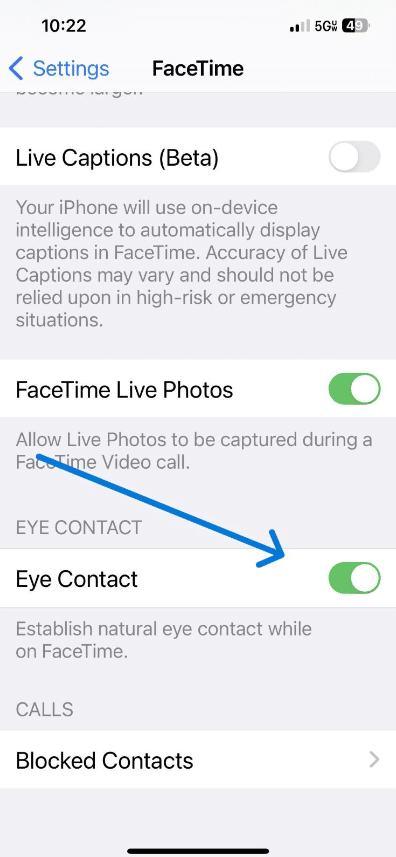
Have you ever been in a virtual meeting or on a FaceTime call where you missed the human connection of eye contact? It almost feels like the other person is not quite present.
However, it’s quite difficult to maintain proper eye contact on video calls because each person would need to look into the camera at all times rather than at the person they’re speaking with on screen. Unfortunately, this also leads to a feeling of disconnect. But not looking at the other person kind of defeats he purpose of a video call.
Apples Eye Contact FaceTime feature aims to fix this modern issue by allowing g you to both maintain eye contact without having to look into the camera.
What is the FaceTime Eye Contact feature?
Apple is attempting to give video calls a more human touch by “correcting eye contact.” The Eye Contact feature has been available since the release of iOS 14, but it needed to be enabled by the user. Since iOS 16 rolled out, anyone with iPhone XS or later is using the Eye Contact feature by default when making FaceTime calls.
How does FaceTime Eye Contact work?
Apple’s augmented reality tool ARKit uses motion tracking and camera scene capture technology to fake eye contact for you—making it appear to the other person that you are looking into the camera while you’re eyes are in reality focused on their face on-screen.
Reviews are mixed. The feature is so effective that many users never even notice it. But others say it feels unnaturally direct or creepy to have artificial eye contact or that their eyes look weird when they see themselves on video. Meanwhile, others would rather not have their eyes scanned. Thankfully, this feature is not mandatory and can be disabled.
How to turn off FaceTime Eye Contact
There is certainly room for improvement when it comes to replicating in real time one of the most delicate forms of human communication—eye contact. If it’s not for you, turning it off is easy.
- Go to Settings on your iPhone.Scroll down to select FaceTime (or type in into the search bar).In the FaceTime menu look for the Eye Contact feature.
- Toggle it on or off

Summary
Apple is a trailblazer when it comes to certain features and this is no exception. With great lighting, you can work it to your advantage.
A feature like this would be great for business meetings when you need to look at other tabs or share screens but perhaps best left out of personal social calls if it feels awkward.
The technology has yet to take into account natural movements such as blinking and the fact that eye contact is intermittent. Have you been FaceTiming with artificial eye contact? Let us know in the comments how you feel about it.









